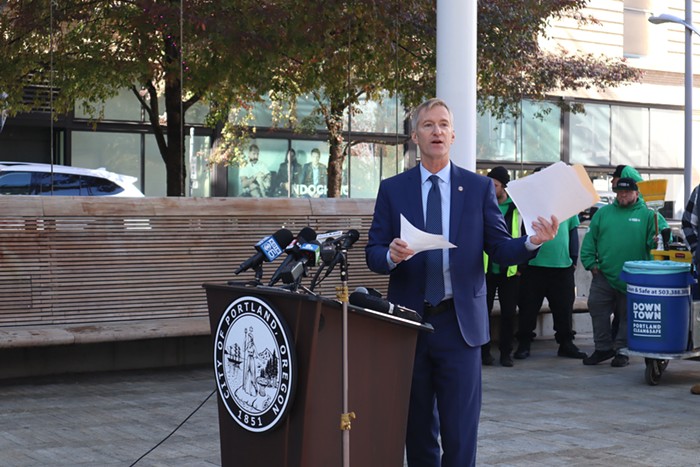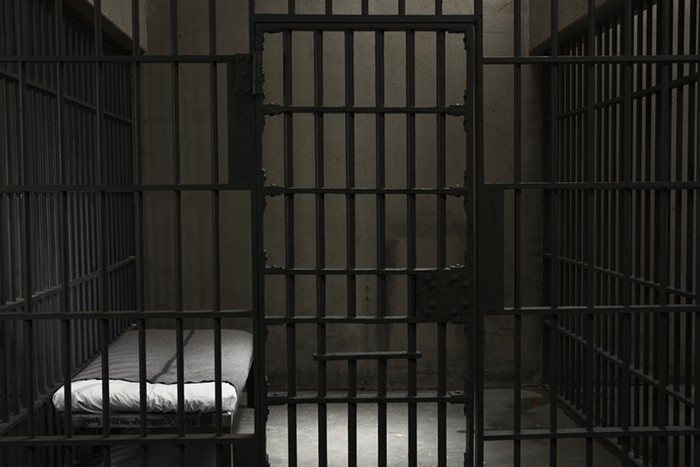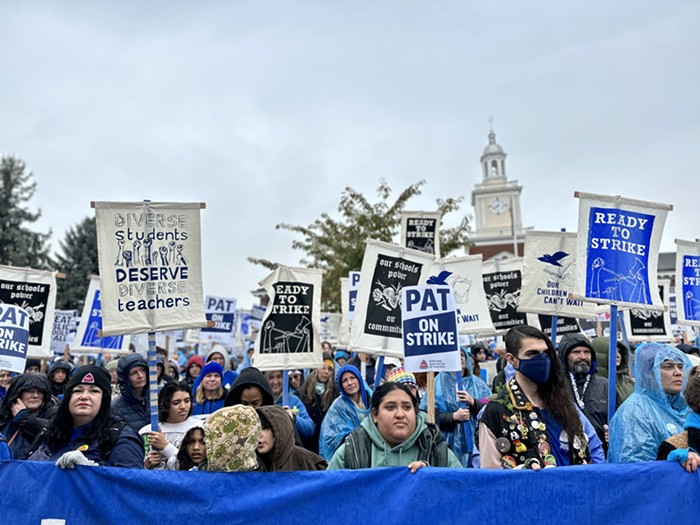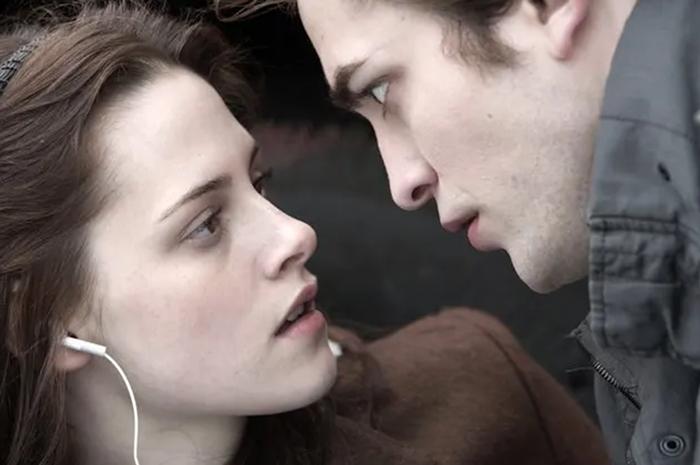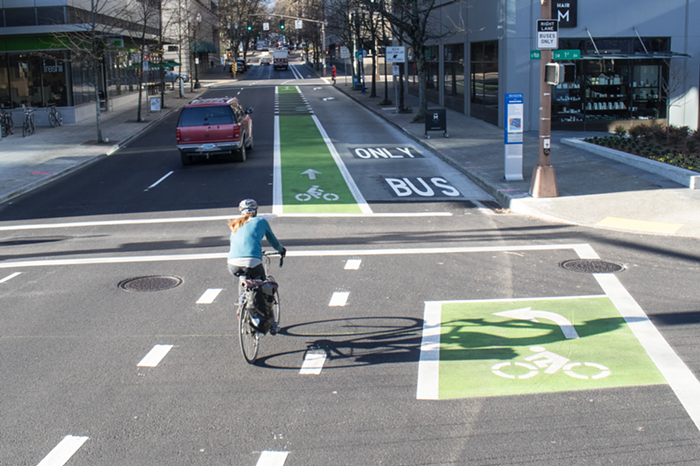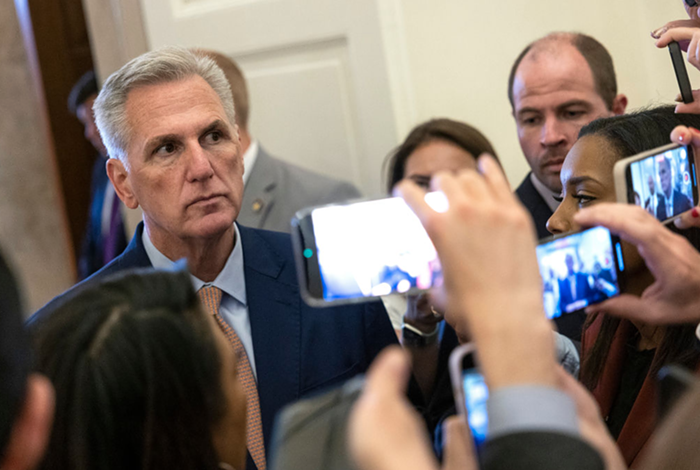"This is my last dance, last chance, for love." The scene is Valentine's night, 11 p.m., San Francisco's renowned karaoke bar the Mint, just around the corner from the Lesbian Gay Bisexual Transgender Center, and the evening is hitting a kitsch high. Donna Summer isn't in the house, nor are visitors such as Chris Isaak, Laurence Fishburne, and Belle and Sebastian. Instead, belting out the Thank God It's Friday disco anthem "Last Dance" is a curly-haired woman wearing eyeglasses and Dockers who looks like she just got off work. A faux torch blowing a plastic-baggie flame flutters above her head, Christmas tree lights twinkle around the stage, and some 100-or-so lovelorn wannabe warblers sway and cheer before her. Backing her up (though he's been known to bring singers hilariously down), KJ Frank Huang waves a spot around like a searchlight before jumping down from the booth, spanking his own booty and boogying along with his favorite customers.
It is a moment of pure, perfect cheese. And it's been happening ever since karaoke--often mistranslated as "empty orchestra," according to Karaoke Around the World editor Toru Mitsui--first popped up in Kobe, Japan. In the early '70s, the tape-jukebox was a substitute for the musicians that would stroll from bar to bar, accompanying reveling salarymen and yakuza. Firmly ensconced in the U.S. since the mid-'80s, the pursuit continues to bring out the inner pop star in your everyday wage slaves.
But that doesn't keep karaoke from threatening the status quo and affecting the pop landscape. Just south of San Francisco, in the city of San Mateo, authorities recently imposed a temporary ban on private karaoke rooms, or boxes, fretting that the phenom encouraged prostitution, gambling, drug use, or other misdeeds. Similar crackdowns have occurred in Asia, reports the Associated Press, despite the boxes' popularity (Japan boasts an estimated 100,000). Nonetheless, Bay Area Asian American groups protested, declaring the city council was culturally clueless and unfair to shy singers; I recalled similar worries about public pay toilets. What is it about small-spaces-for-rent that bring out the enforcers?
Still, it's no surprise that the powers-that-be might want to legislate karaoke hot-boxing out of existence, now that it has withstood flash-in-the-pan predictions. Duets, the 2000 Bruce/Gwyneth father-daughter throwdown, was a cinematic love song to the power of karaoke, introducing terms like "k talk" to lightly dozing movie-going masses who might have missed their turn at their mic. "It's like a rush that you wouldn't believe! You get to be a star for three minutes!" a singer raves to Paul Giamatti's Paul Woods. From there, it's just one downbeat Todd Rundgren cover--"Hello It's Me"--and a handful of bennies between Woods' straight life and a wild midlife-crisis of a road trip. Karaoke takes this working stiff away from the business grind and makes him realize how out of step, and out of tune, he is with life and his ability to express himself. Considering the con artists and scofflaws that converge on the film's grand finale, a regional karaoke competition, you'd think karaoke was threat to national productivity. In Duets, karaoke is the mind-expanding vehicle to freedom that motorcycles and acid were in Easy Rider.
And that's the terrible, often wretchedly out-of-tune beauty underlying all the mic jockeying--karaoke favors enthusiasm and zealous performance more than it does perfect technique and good looks. It embodies a democracy of blood, sweat, and tunes, rather than a meritocracy of Beyonce-like showbiz polish. Why else do Lost in Translation's Bill Murray and Scarlett Johansson bond over Elvis Costello/Nick Lowe's "(What's So Funny 'Bout) Peace, Love and Understanding" in a sleek Tokyo karaoke box? Through karaoke, Bob and Charlotte try out new voices and identities much as they'd experiment with new outfits and wigs. Bellowing his way through the new wave hits, and evoking his long-ago Nick the lounge singer from Saturday Night Live, Murray makes the connection between the piano bars of yesteryear and the karaoke watering holes of today.
There's an equalizing thread extended through lounge acts and open mics to karaoke; these days I suspect karaoke has more impact on how ordinary people participate in and use music than even punk or hiphop. Rob Drew, author of Karaoke Nights: An Ethnographic Rhapsody, believes
karaoke's popularity stems from a dearth of mainstream, public music-making opportunities.
"A t another time in American history, there were amateur choruses, and most middle-class homes had pianos, and people would gather around during the holidays or at parties and play and sing. But that's not the case anymore," he writes. "Mostly, we're used to listening to recordings and just playing the role of passive receiver in relation to the music industry. I think part of the irony of karaoke is it uses that very technology of recording to put the listener back into the mix. It gives us a more active role in the process." He goes on to compare the role-playing and interactivity of karaoke to that which is normally associated with internet culture and chat rooms.
He's probably right. How many people play in garage bands or wield their best battle rhymes, in front of audiences, and how many get their first taste of the limelight in the measurably safer space of a karaoke bar? Is it any surprise that--as the pop charts, radio playlists and major label rosters seem to constrict, allowing only a chosen, perfect few with mass appeal to reach big audiences--aspirational fissures begin to appear.
Who wants or needs perfection? Karaoke--and its participants' altered definitions of musical entertainment--probably has as much to do with the acceptance and success of American Idol as reality TV. Creativity and originality aren't issues--rather, it's the contestants' way with a familiar pop song--as well as their personalities, dreams, and all-too-apparent frailties. The show also subtly demonstrates the mark karaoke is making on stateside pop charts, much as it has touched Japanese singles, which now often come packaged with an additional, karaoke-ready instrumental track, according to Hiroshi Ogawa in Karaoke Around the World. Too bad the lack of imagination among the prospective idols can be a bigger bummer than a sour note.
But there's hope. Contrast American Idol with the distant-yet-related trend of indie artists like Anna Oxygen, Dynasty Handbag, DJ Shitbird and the Party Machine, and Da Hawnay Troof--who rock their mics to recorded sound emanating from a boombox, laptop, or mixing board. Unlike Kelly, Clay and company, they draw from hiphop lyricists and aerobics/ dance class teachers, as well as karaoke partygoers. Role-playing and chutzpah are the coin of the pop fantasy realm here, not J record contracts. So in a pop landscape where dance routine-dominated and lip-synched arena shows can dominate, call their efforts yet another form of piracy--here, solo swashbucklers crash the dance with not-so-new wave beats and audience--changing the culture as they're aping the stars.

